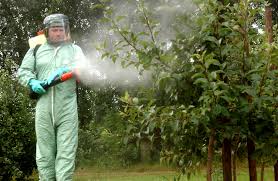In today’s globalized world, it is not inconceivable that one might drink coffee from Colombia in the morning, munch cashews from Vietnam for lunch, and gobble grains from Ethiopia for dinner. That we can enjoy these products is thanks, in large part, to expanded pesticide use across the developing world.
Every year, some 3.5 billion kilograms (7.7 billion pounds) of pesticides — a catchall term for the herbicides, insecticides, and fungicides applied to crops from seed to harvest — are used to preserve the quality and quantity of fruits, vegetables, and grains. Herbicides, such as Monsanto’s weed killer glyphosate, make up the bulk of the pesticides applied worldwide.
In the developing world, where swelling populations, increased urbanization, and growing economies create a demand for ever more food — produced quickly and inexpensively — pesticide application rates are rising. Bangladesh and Thailand have quadrupled their pesticide use since the early 1990s, while Ghana, Ethiopia, and Burkina Faso, countries newer to the pesticide game, have seen a tenfold increase over the same period


Recent Comments